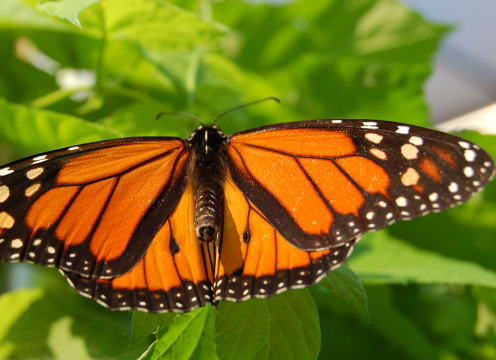(单词翻译:单击)
Although, bats and moths certainly had an evolutionary arms race.
尽管如此,蝙蝠和飞蛾的确在进化上展开了一场军备竞赛。
Bats used echo location to hunt moths and moths responded by adapting the capacity to detect those sonic pulses.
蝙蝠利用回声定位来捕捉飞蛾,而飞蛾则通过调整探测这些声波脉冲的能力来做出反应。
So, bats developed new frequencies that the moths couldn't detect as well,
蝙蝠发明了新的频率,而蛾子却无法探测到,
but new moths were able to transmit sounds that threw off the bats' measurements, or signaled that the moths were poisonous.
但是新的蛾子能够传递出超出蝙蝠测量范围的声音,或者是蛾子有毒的信号。
Regardless of how fiercely bats and moths have tried to outgun each other, that can't have pushed butterflies to the daytime,
不管蝙蝠和飞蛾如何激烈地竞争,这都不能使蝴蝶生长在白天,
since bats didn't develop echolocation until 50 million years after butterflies showed up.
因为蝙蝠直到蝴蝶出现后的5000万年才发展出回声定位。

It's most likely that butterflies moved into the daytime to find more nectar from flowers that open during that time.
蝴蝶很有可能是为了从那时开放的花朵中寻找更多的花蜜而开始在白天活动。
Eventually, butterflies shed their drab ancestral coloring and evolved coats of vibrant colors
最终,蝴蝶褪去了它们祖先单调的颜色,进化出了鲜艳的颜色。
that advertise to mates and also send warnings to predators.
蝴蝶用这些颜色来吸引配偶,也向捕食者发出警告。
译文来自可可英语


